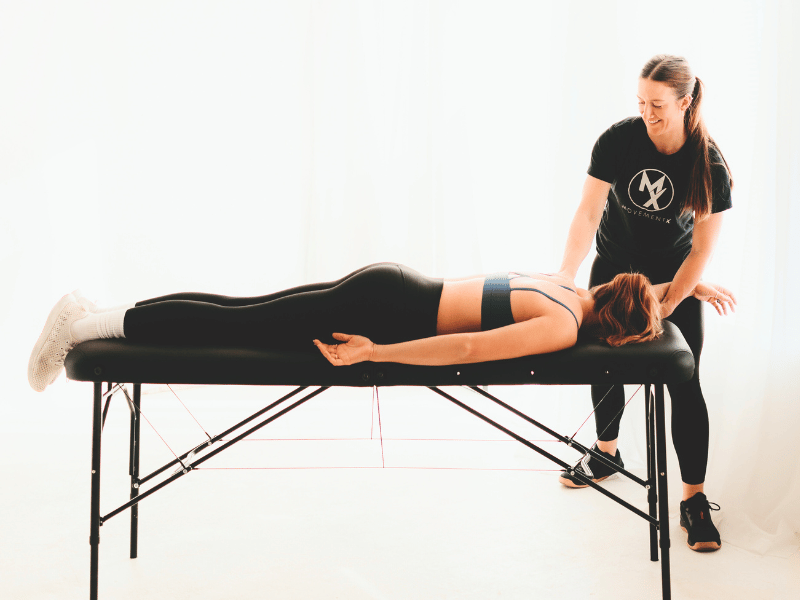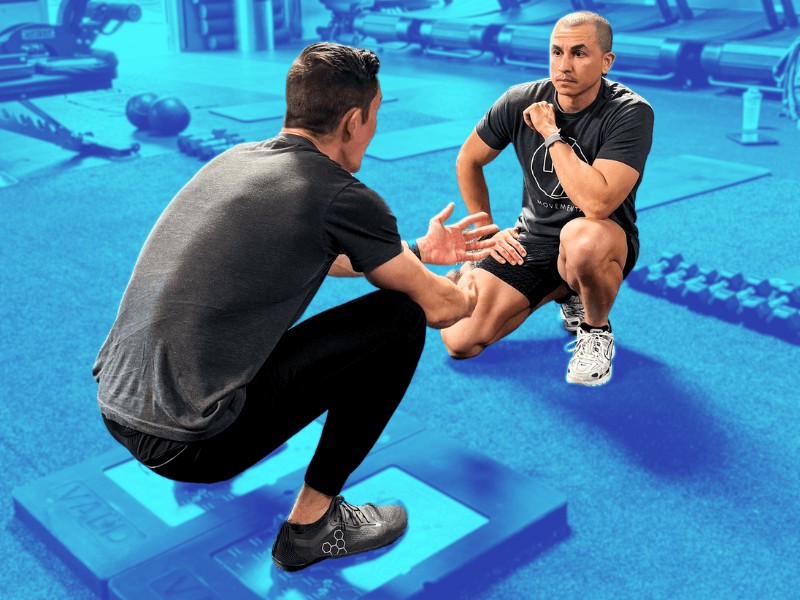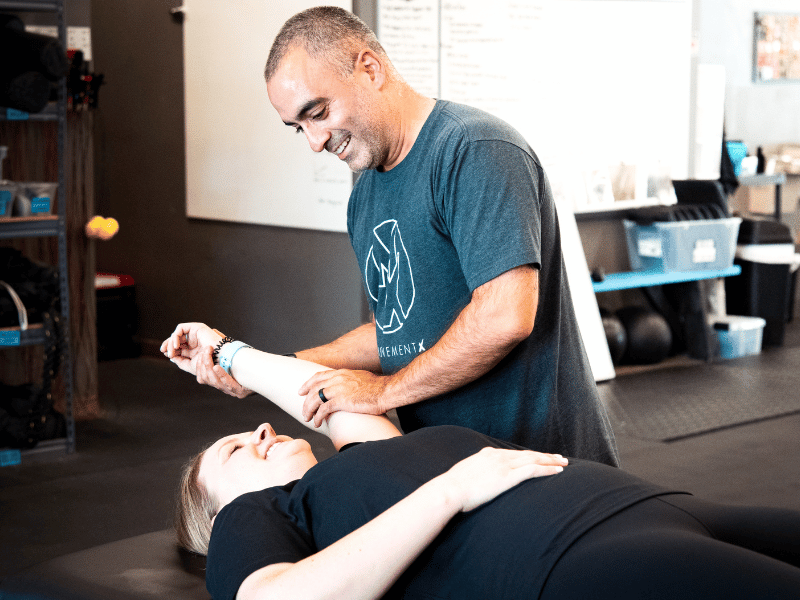What is Dry Needling? Learn How It Can Reduce Pain and Aid Muscle Recovery
If you’ve been struggling with persistent muscle pain, tightness, or limited movement, dry needling could be a valuable tool to consider in your recovery journey.
This innovative technique, which is often used by our specialized physical therapists, targets muscular pain to offer relief and promote healing. Whether you’re recovering from a recent injury or dealing with longstanding pain, dry needling may be the missing piece in your pain management and rehabilitation plan.
Dry needling has gained increasing attention in the rehabilitation world for its ability to treat a range of musculoskeletal conditions effectively. Research has found that dry needling, when combined with other therapies, improved pain and function in patients with musculoskeletal conditions.
In this guide, you’ll learn what dry needling is, how it works, and how it can potentially relieve your pain and aid your recovery. By reading on, you’ll gain a clearer understanding of how this technique can complement your larger physical therapy plan and help you get back to doing what you love—pain-free.
What is Dry Needling?
Dry needling is a specialized technique used by some physical therapists to relieve muscle pain and improve movement. It involves the insertion of thin, sterile needles into specific trigger points within muscles. These trigger point areas often feel tight or knotted. Unlike acupuncture, which is rooted in traditional Chinese medicine, dry needling is based on modern Western medicine principles, particularly targeting the neuromuscular system. When these needles are applied to certain muscular trigger points, they can help release tension, improve blood flow, and stimulate the body’s natural healing response.
Benefits of Dry Needling during Physical Therapy
Dry needling can offer a variety of benefits for people dealing with pain, muscle tightness, and movement restrictions. While individual results may vary, many people find that dry needling complements their overall physical therapy treatment plan and enhances their recovery process. Here are some of the benefits often mentioned by our clients:
- Pain Relief: Dry needling may help reduce pain or discomfort by targeting overactive muscles and trigger points.
- Improved Range of Motion: By releasing muscle tightness and improving flexibility, dry needling may enhance your range of motion and allow you to move more freely and comfortably.
- Faster Muscle Recovery: Dry needling may accelerate the healing process by increasing blood flow and reducing inflammation in the targeted area.
- Decreased Muscle Tightness: Tight, knotted muscles can lead to discomfort and impaired movement. Dry needling is often used to release these trigger points, which can result in reduced tension and improved mobility.
- Enhanced Physical Performance: For athletes, dry needling may support overall physical performance by improving muscle function, reducing soreness, and helping prevent future injuries.
- Complementary to Other Therapies: When used alongside other physical therapy treatments, dry needling can amplify the overall results and help you achieve better outcomes.
By addressing both pain and movement limitations, dry needling offers a unique opportunity to support your physical therapy goals and improve your quality of life. If you’re ready to explore how dry needling could enhance your recovery or performance, request a session with MovementX today.
Who Should Consider Dry Needling Treatment
Dry needling can be a helpful addition to a physical therapy rehab plan for a wide variety of people, obviously depending on your unique needs and conditions. It’s worth stating directly that not everyone requires dry needling as part of their rehab plan. That said, here are some examples of people who may consider dry needling as part of their recovery plan:
- People with Chronic Pain: If you’ve been dealing with long-term pain from conditions like fibromyalgia, tension headaches, or long-standing low back pain, dry needling may help alleviate some of that persistent discomfort by addressing your tight muscles and trigger points.
- Athletes or Active Individuals: Whether you’re recovering from a sports injury or managing muscle soreness from intense training, dry needling can sometimes improve muscle recovery, reduce stiffness, and support better performance.
- Those with Muscle Tightness or Tension: If muscle tightness is limiting your range of motion or causing discomfort, dry needling may help release those knotted muscles, leading to improved flexibility and reduced tension.
- People Recovering from Injury: Individuals healing from soft tissue injuries (such as strains, sprains, or overuse injuries) may find that dry needling supports faster recovery by improving blood flow and reducing inflammation.
- Individuals with Postural Issues or Muscle Imbalances: If poor posture or muscle imbalances are contributing to pain or dysfunction, dry needling can potentially address areas of muscle overactivity and restore movement patterns.
- People Managing Joint Pain: Dry needling may also benefit those experiencing joint pain by targeting surrounding muscle tightness that can contribute to joint stress and pain.
How Physical Therapists Use Dry Needling
Working with a skilled physical therapist for dry needling should be carefully tailored to meet your specific goals. Your PT should always start by conducting a thorough evaluation to identify areas of muscle tightness or painful movement. Based on this assessment, they’ll determine which muscles or trigger points may benefit from dry needling as part of your overall rehabilitation plan.
During a dry needling session, your physical therapist will use small sterile needles to target specific points in your muscles. The procedure is usually quick and most patients feel little to no discomfort. You may experience a brief twitch or mild soreness as the muscle responds to the needle—which is normal and expected. These sensations are normal and often a sign that the muscle is releasing tension and beginning to heal. Your therapist will monitor your response to the treatment, adjusting the intensity and technique as needed to ensure your comfort and progress.
Dry needling is best combined with other therapies—such as therapeutic exercises, manual therapy, or stretching. Your physical therapist will guide you through this process and explain what you can expect in terms of improvement.
Common Concerns Before Getting Dry Needling Treatment
It’s natural to have questions or concerns before starting dry needling, especially if it’s your first time. Here are some common concerns we often hear:
“Does dry needling hurt?”
Many people worry about pain from the needles. In most cases, the needles are so thin that patients feel little to no discomfort during insertion. Some may experience a slight twitch or muscle soreness afterward, but these sensations are typically brief and mild. Your physical therapist will work with you to ensure the treatment is as comfortable as possible.
“Is dry needling safe?”
When performed by a trained and licensed physical therapist, dry needling is generally considered a safe and low-risk procedure. The needles used are sterile, single-use, and very fine. Your therapist will take every precaution to ensure cleanliness and proper technique. Adverse effects are rare, but your therapist will explain any potential risks and how to minimize them.
“What if I’m afraid of needles?”
It’s understandable to feel anxious if you’re not comfortable with needles. The needles used are small and thin, and the process is usually quick and minimally invasive. If you do feel nervous, it may not be deemed the best treatment option for you. In that case, you and your PT can discuss other effective treatment options.
“How many sessions will I need?”
The number of dry needling sessions varies depending on your condition, goals, and response to treatment. Some patients notice improvements after just one or two sessions, while others may require more consistent treatment over several weeks. Your physical therapist will create a personalized plan based on your specific needs and adjust it as you progress.
“Is dry needling legal in my state of residence?”
Some states such as California prohibit physical therapists from performing dry needling treatment. It is simply not included as part of certain treatments deemed legal in PT practice acts. Before even considering dry needling as a treatment option, please first check to see if physical therapists in your state are allowed to administer the treatment.
Conclusion
Are you tired of living with pain or muscle tightness that’s holding you back from feeling your best? Have you tried other treatments but still haven’t found lasting relief? Dry needling may be the solution you’ve been looking for. Imagine what life could be like with reduced pain, improved mobility, and a stronger, healthier body… we’re here to make that your reality.
At MovementX, our physical therapists are ready to help you explore how dry needling can be part of your recovery journey. Are you feeling ready to get started? Request a session today and let’s work together to get you back to doing what you love.
References
- https://www.ncbi.nlm.nih.gov/pmc/articles/PMC9917679/
- https://pubmed.ncbi.nlm.nih.gov/28158962/
- https://ijspt.scholasticahq.com/article/35693-dry-needling-a-clinical-commentary
Share This Page
More Conditions We Treat
Found this page interesting? Learn more about other conditions we treat:




